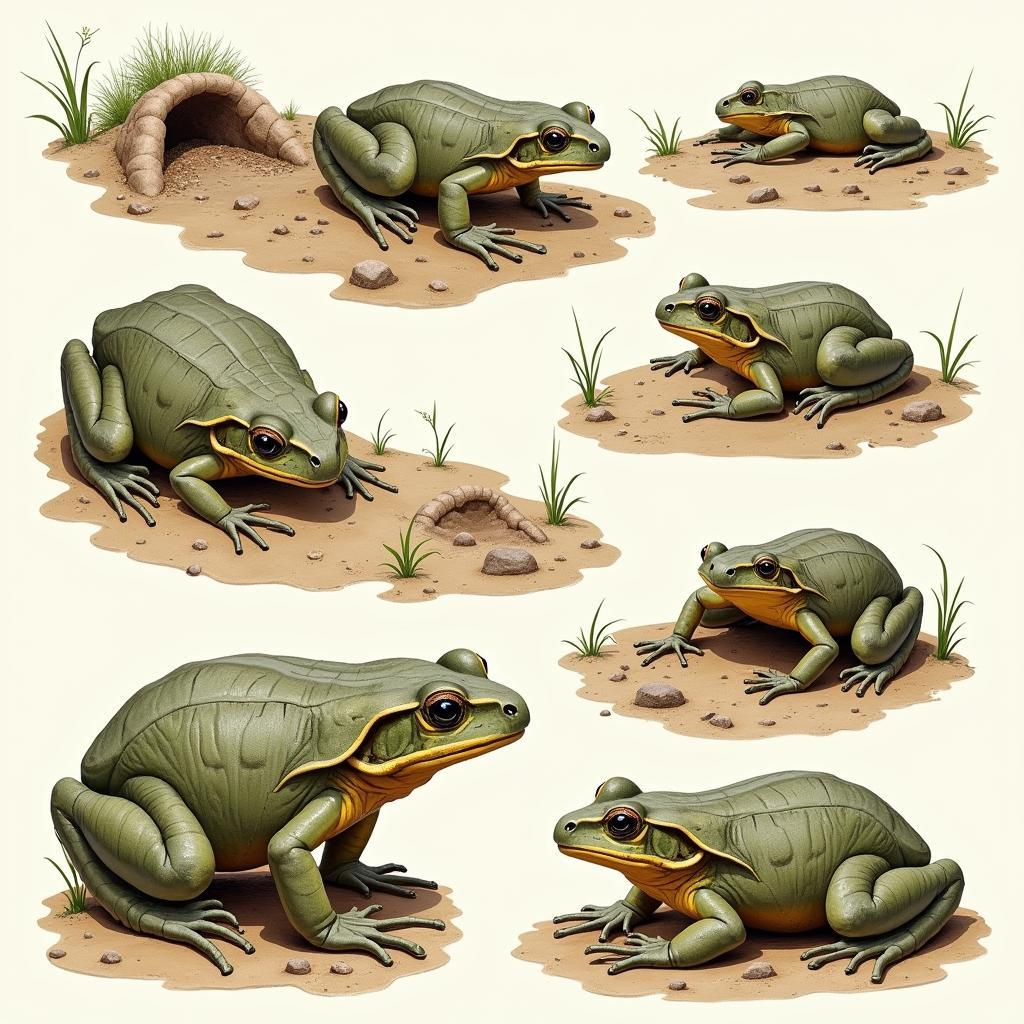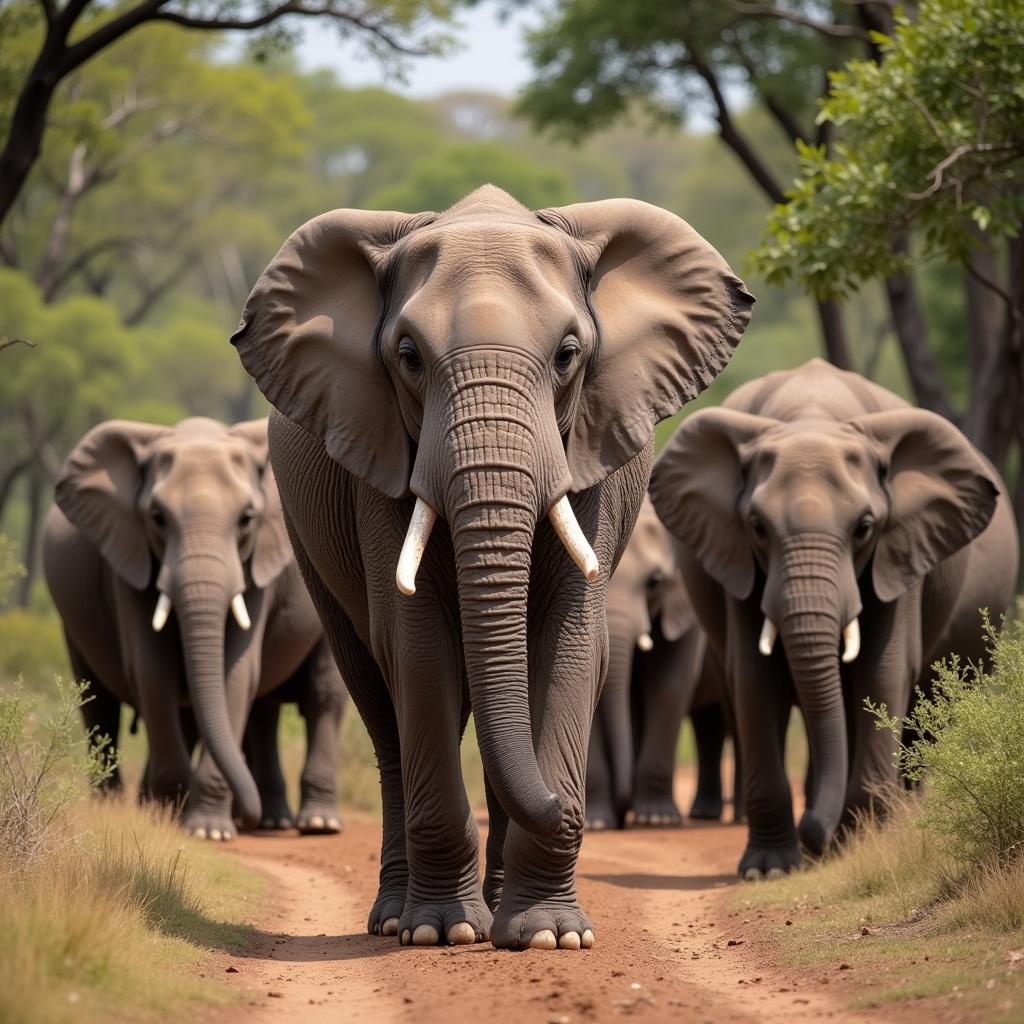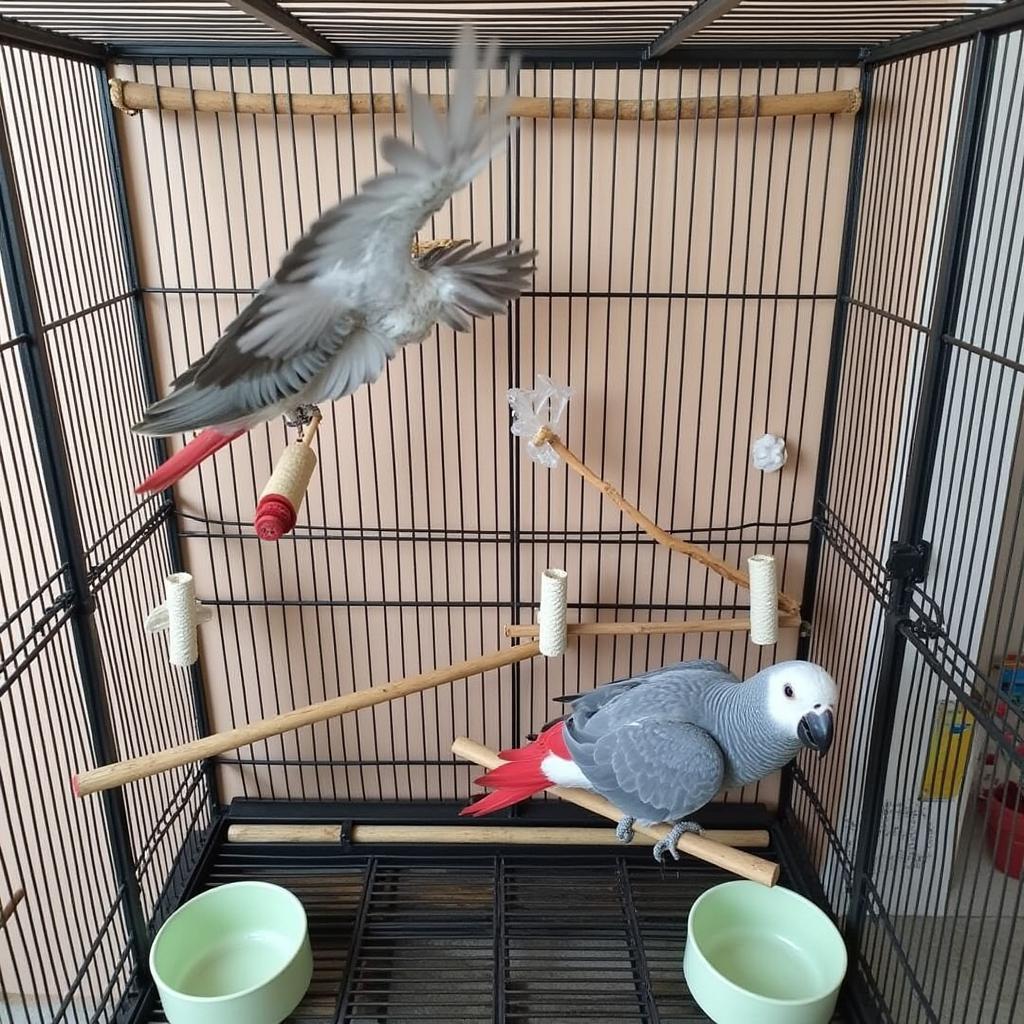The African Bullfrog Cocoon: A Survival Strategy in Harsh Conditions
The African Bullfrog Cocoon is a fascinating adaptation that allows these amphibians to survive in arid environments. This article delves into the intricacies of this survival mechanism, exploring its formation, purpose, and the unique biology of the African bullfrog. african bullfrog adapted Let’s uncover the secrets of this remarkable creature and its incredible ability to endure harsh conditions.
Understanding the African Bullfrog’s Need for a Cocoon
The African bullfrog, known for its aggressive nature and impressive size, inhabits regions of sub-Saharan Africa characterized by prolonged dry seasons. To cope with the scarcity of water and extreme temperatures, these frogs have evolved a unique survival strategy: the formation of a protective cocoon. This cocoon isn’t like the silk cocoon of an insect; it’s a shed layer of skin.
How Does the Cocoon Form?
The African bullfrog cocoon is formed by the secretion of multiple layers of shed skin. As the dry season approaches and water sources dwindle, the frog burrows underground. It then begins shedding its skin, which forms a tight, waterproof barrier around its body. This process can take several days and results in a multi-layered cocoon.
 African Bullfrog Cocoon Formation Process
African Bullfrog Cocoon Formation Process
The Purpose of the African Bullfrog Cocoon
The primary purpose of the cocoon is to prevent water loss. The multi-layered skin acts as an impermeable barrier, trapping moisture within the cocoon and preventing the frog from dehydrating. This is crucial for survival in the arid environment. Additionally, the cocoon provides some protection from predators and extreme temperatures while the frog is dormant.
The African Bullfrog’s Unique Biology and Adaptations
The African bullfrog exhibits several other adaptations that contribute to its survival in harsh conditions. These adaptations, combined with the cocoon, make it a true marvel of nature.
Aestivation: A State of Dormancy
The African bullfrog enters a state of dormancy called aestivation during the dry season. This period of inactivity allows the frog to conserve energy and minimize its need for water and food. The cocoon plays a vital role in supporting this dormancy. african bullfrog life cycle
A Voracious Appetite and Opportunistic Feeding
When the rains return, the African bullfrog emerges from its cocoon with a voracious appetite. It feeds on insects, rodents, small reptiles, and even other frogs. This opportunistic feeding strategy allows them to quickly regain lost weight and prepare for the next breeding season.
What are the differences between the African Bullfrog and the Goliath Frog?
While both are large amphibians, the Goliath frog does not form a cocoon. It relies on its proximity to water sources for survival. african bullfrog vs goliath frog This difference highlights the unique adaptation of the African bullfrog to arid environments.
Dr. Khadija Mwanamboka, a herpetologist specializing in African amphibians, explains, “The African bullfrog’s cocoon is a remarkable testament to the power of adaptation. It allows these frogs to thrive in environments that would be inhospitable to most other amphibians.”
Professor Abasi Adebayo, an expert in animal physiology, adds, “The intricate process of cocoon formation and the physiological changes that occur during aestivation are truly fascinating. The African bullfrog offers valuable insights into the diverse strategies animals use to survive.”
The African Bullfrog and its Habitat
Understanding the African bullfrog cocoon requires an understanding of its habitat. These frogs are found in a variety of habitats within sub-Saharan Africa, but they are most commonly associated with savannas and grasslands. african bullfrog habitat
The cyclical nature of wet and dry seasons in these regions is a key driver for the evolution of the cocoon.
In conclusion, the African bullfrog cocoon is a remarkable adaptation that enables these fascinating creatures to survive in challenging environments. This complex survival strategy, combined with other adaptations like aestivation and opportunistic feeding, underscores the incredible resilience and adaptability of life in the face of adversity. Further research into the African bullfrog cocoon could reveal valuable insights into how animals adapt to changing climates.
Need help? Contact us 24/7. Phone: +255768904061, Email: kaka.mag@gmail.com, Address: Mbarali DC Mawindi, Kangaga, Tanzania.



